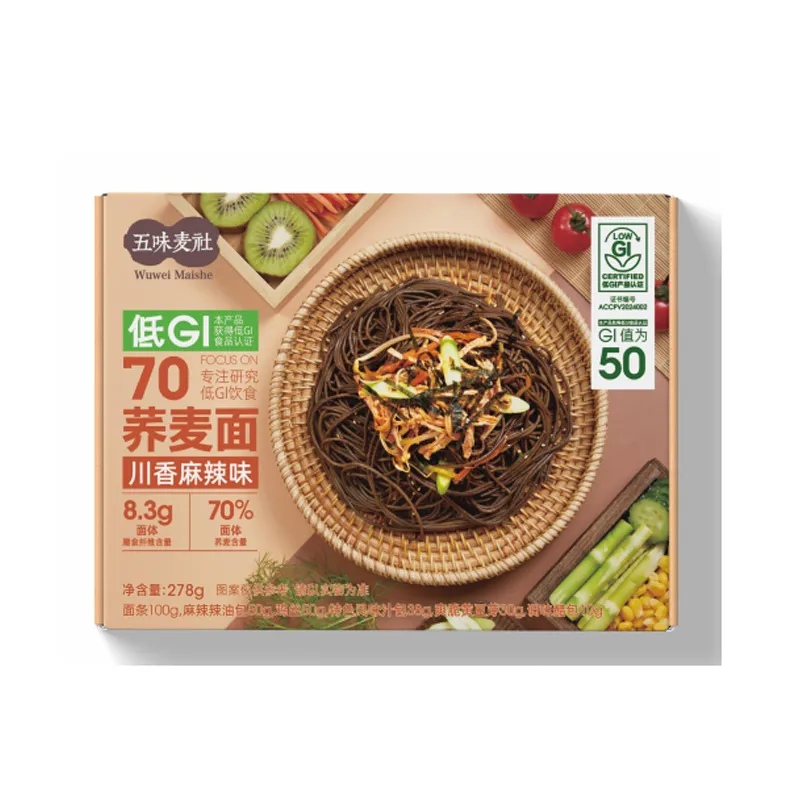Is Ramen Healthy for Individuals with Diabetes and Blood Sugar Management?
Are Ramen Noodles Good for Diabetics?
Ramen noodles are a popular convenience food, often associated with quick meals and late-night snacks. However, for individuals with diabetes, the question arises Are ramen noodles a suitable option? To answer this, we need to consider several factors, including the nutritional composition of ramen noodles, their impact on blood sugar levels, and potential alternatives.
Nutritional Breakdown of Ramen Noodles
Traditional ramen noodles are primarily made from refined wheat flour, water, salt, and an alkaline mineral water known as kansui. This simple ingredient list contributes to their high carbohydrate content, with a single serving typically containing around 40-50 grams of carbohydrates. For people with diabetes, managing carbohydrate intake is critical, as carbohydrates are a primary factor affecting blood glucose levels.
In addition to carbohydrates, ramen noodles are often low in fiber and protein, both of which play crucial roles in stabilizing blood sugar levels. Foods high in fiber can help slow the absorption of glucose into the bloodstream, preventing spikes in blood sugar. Unfortunately, most instant ramen products do not provide significant amounts of fiber. Moreover, the protein content in ramen is usually minimal, further diminishing their ability to promote satiety and maintain balanced blood sugar levels.
Blood Sugar Impact
The high glycemic index (GI) of regular ramen noodles is another concern for diabetics. The glycemic index is a measure of how quickly a food raises blood glucose levels. High-GI foods can cause rapid spikes in blood sugar, which can be particularly detrimental for people managing diabetes. Regular consumption of such foods can lead to poor glycemic control and increase the risk of long-term complications.
is ramen noodles good for diabetics

Healthier Alternatives
Given the concerns about traditional ramen noodles, diabetes-friendly alternatives exist. One option is to look for whole-grain or high-fiber noodle varieties. Whole-grain noodles contain more fiber, which aids in digestion and helps regulate blood sugar levels. Another alternative is to choose noodles made from legume flour, such as chickpea or lentil noodles. These options typically offer higher protein and fiber content, making them a better fit for blood sugar management.
Additionally, incorporating vegetables and lean proteins into ramen dishes can create a more balanced meal. Adding leafy greens, mushrooms, or bell peppers can enhance fiber content and provide essential nutrients. Including protein sources like chicken, tofu, or eggs can improve satiety and help stabilize blood sugar levels throughout the day.
Moderation is Key
If someone with diabetes chooses to indulge in ramen noodles occasionally, moderation is vital. Pairing ramen with low-GI foods and being mindful of portion sizes can mitigate the potential impact on blood sugar levels. Additionally, making homemade ramen using healthier ingredients allows for better control over the meal's composition, enabling individuals to enjoy the taste without compromising their health.
Conclusion
In conclusion, traditional ramen noodles are not the best choice for individuals with diabetes due to their high carbohydrate content, low fiber and protein levels, and high glycemic index. However, healthier alternatives and modifications can make ramen a more diabetes-friendly meal. By choosing whole-grain or legume-based noodles, adding plenty of vegetables and protein, and practicing moderation, those with diabetes can still enjoy the flavors of ramen while supporting their overall health. As always, consulting with a healthcare professional or nutritionist can provide personalized advice and guidance.
-
Unleash Your Inner Chef with Delectable Italian Pasta CreationsNewsAug.01,2025
-
Savor Health and Flavor: Irresistible Soba Noodles for Sale Await!NewsAug.01,2025
-
Nourish Your Body with Premium Organic Ramen - A Culinary Delight AwaitsNewsAug.01,2025
-
Elevate Your Dishes with Our Exquisite Kinds of Egg NoodlesNewsAug.01,2025
-
Dive into Flavorful Convenience with Our Ramen OfferingsNewsAug.01,2025
-
Discover Exquisite Types of Naengmyeon and Chilled Soba NoodlesNewsAug.01,2025
-
Is Whole Wheat Pasta Healthy?NewsMay.30,2025
Browse qua the following product new the we

















































































































